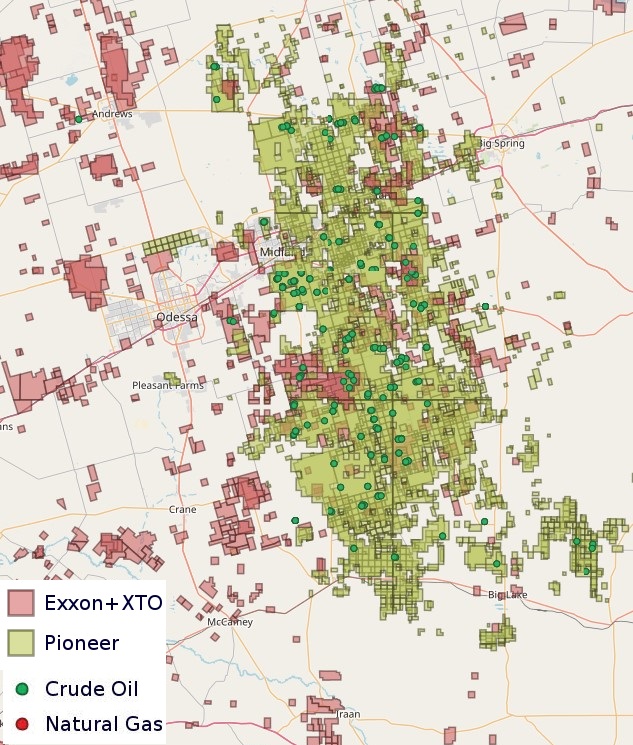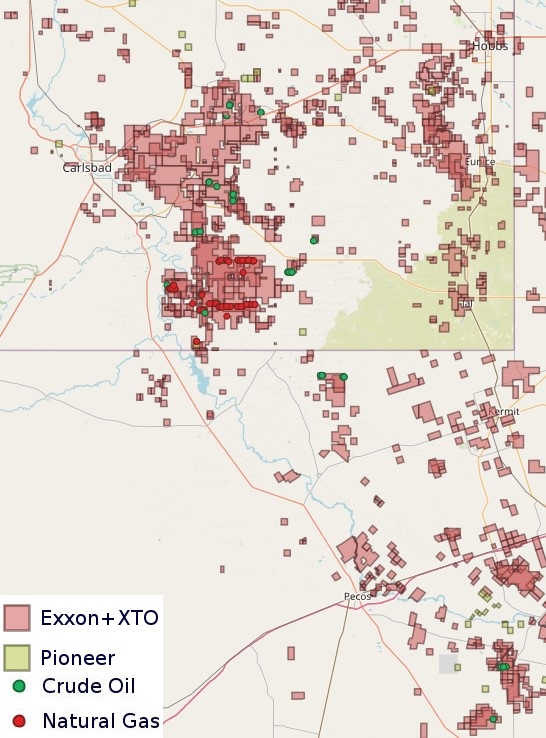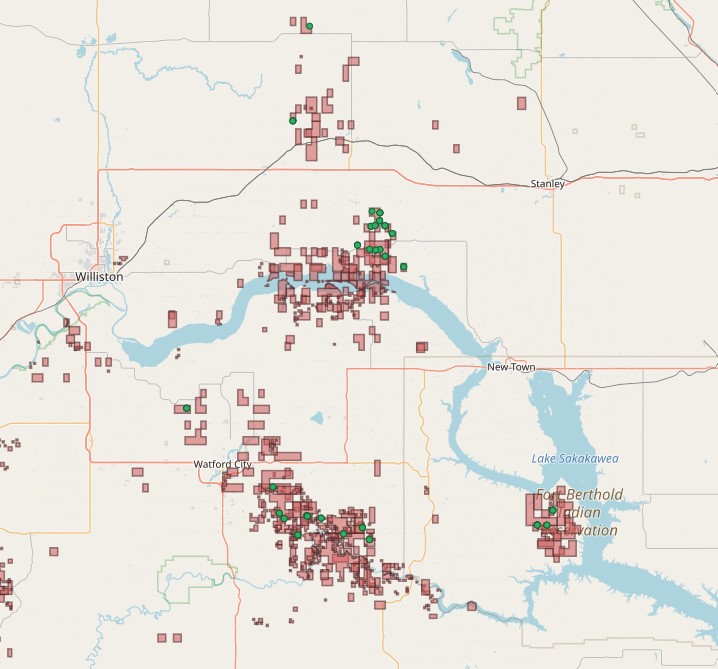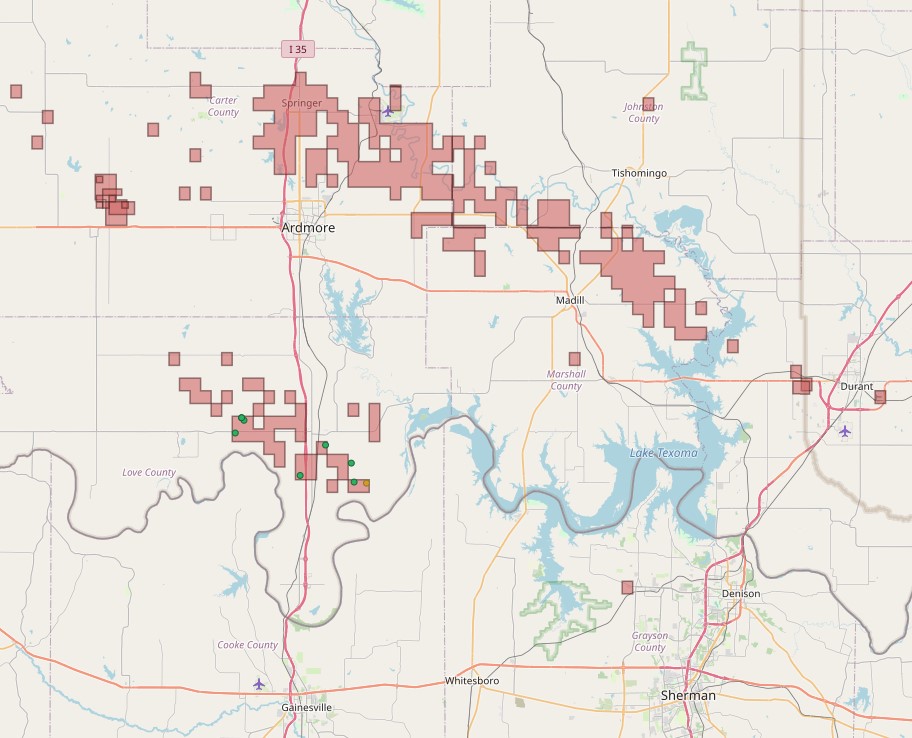
Exxon Mobil became one of the largest operators of the Midland Basin oil field through a $60 billion acquisition of Pioneer Natural Resources. (Source: Shutterstock.com)
Exxon Mobil Corp. plans to apply decades of shale research and drilling experience to some of the Permian Basin’s best acreage after acquiring Pioneer Natural Resources.
Supermajor Exxon Mobil closed a $60 billion acquisition of Pioneer Natural Resources on May 3 after regulatory scrutiny by the U.S. Federal Trade Commission—federal intervention that will ultimately prevent Pioneer founder and Chairman Scott Sheffield from sitting on the Exxon board.
The deal delivers to Exxon what experts call among the best acreage and inventory in the Permian Basin, the nation’s top oil-producing region.
Pioneer owns a large, contiguous acreage position in the core of the Midland Basin, where the company leads in oil production among peers, including ConocoPhillips and Diamondback Energy.

Before closing the Pioneer deal, Exxon was much larger on the Delaware Basin side of the Permian, stretching from far West Texas into southeastern New Mexico.
Exxon gained a blocky acreage footprint in the core of the New Mexico Delaware Basin in 2017 through a $6.6 billion acquisition from the Bass family of Fort Worth, Texas.
Exxon and XTO Energy, the unconventional shale gas leader Exxon acquired for $36 billion in 2010, also have a smaller Midland Basin position.
The company also holds interests in acreage and legacy vertical wells along the Permian’s Central Basin Platform, an area that developed decades before advances in horizontal drilling and fracking technologies.

The combination boosts Exxon’s Permian production up to 1.3 MMboe/d.
Bart Cahir, senior vice president in Exxon Mobil’s unconventional shale business, told Hart Energy that Exxon is confident it can ramp production up to 2 MMboe/d in 2027 after the Pioneer deal.
“They have deep operating expertise and excellence, as do we,” Cahir said. “We probably bring a little bit more of a technology and research orientation.”
“As we put that alchemy together, it’s really exciting,” he said.
RELATED
Mighty Midland Still Beckons Dealmakers
Go long
Exxon and XTO have worked to perfect Permian drilling and completion designs for several years.
Cahir said Exxon was among the first operators to commit to so-called “cube” development in the Permian—where multiple wells are drilled targeting multiple benches from a single well pad.
Pioneer has also deployed a cube development strategy in the Midland Basin. But Exxon is excited to deploy the strategy at scale across Pioneer’s massive asset.
Exxon has focused on optimizing the spacing and stacking of wells across various target intervals; designing completions; understanding rock mechanics; and studying how fractures grow over time, Cahir said.
“As we think about a unified development plan, we’re going to spend a lot of time leveraging that technical know-how we have in that space,” Cahir said.
Cube development has helped operators scale and optimize projects, reduce drilling costs and grow production. E&Ps are also using fewer rigs to drill longer horizontal laterals to optimize drilling programs.
Exxon is among the producers going long in the Permian. Cahir said the company has drilled wells with 4-mile laterals in the Permian Basin.
Data from Enverus Intelligence Research shows that Exxon is a leading operator drilling longer laterals on both the Midland and Delaware sides of the basin.
“We do anticipate expanding our use of more 4-mile laterals as we continue to develop,” Cahir said.
Exxon drilled three 4-mile lateral wells at its production facilities at Poker Lake, New Mexico, according to Enverus data.
Also in the Delaware Basin, Exxon drilled a 3.6-mile lateral at its Big Eddy unit in New Mexico.
In the Midland Basin, XTO Energy drilled a 3.5-mile lateral on a John Braun A Unit 4 lease in Midland County, Texas.
“We’re going to be able to extend lateral lengths out even further across this contiguous acreage, which drives you a level of capital efficiency,” Cahir said, “and we’re doing that still seeing our recoveries enhanced through time.”
Exxon is working in other areas to improve its effectiveness in fracturing the shale rock and improving resource recovery.
“It’s an exciting time to be able to lean into that technology and begin to deploy it,” he said.
RELATED
Decoding the Delaware: How E&Ps Are Unlocking the Future
Basin allocation
Exxon now has a much bigger inventory portfolio to choose from when it comes to allocating drilling capital.
Generally, the Midland Basin has lower drilling costs—and wells drilled there can sustain lower oil prices while still generating a profit.
Wells drilled on Pioneer’s acreage have some of the best economics in the Midland Basin: When the Pioneer acquisition was announced in October 2023, Exxon said it anticipated a cost of supply of less than $35/bbl from Pioneer’s assets.
Meanwhile, the most recent Dallas Fed Energy Survey found that Permian operators require an average oil price of $62/bbl just to break even when drilling a Midland Basin well.
Breakeven prices are higher in the Delaware Basin ($64/bbl WTI average, per the Dallas Fed), where drilling targets are deeper, pressures are higher, geology is more complex and infrastructure bottlenecks frustrate operators.
But as Exxon works to grow Permian production by about 700,000 boe/d to 2 MMboe/d —in about three years— drilling capital will continue flowing into the Delaware, Cahir said.
It’s unclear how the development cadence on Pioneer’s Midland asset might change following closing and integration.
But adding Pioneer’s existing production will give Exxon a massive lift: Pioneer produced around 15.6 MMbbl of crude oil, or 503,000 bbl/d, from the Midland Basin in January, according to the most recent figures from the Texas Railroad Commission (RRC).
Pioneer has actively been filing data with the RRC on new well completions targeting the Spraberry trend area across its Midland footprint, records show.
The go-forward plans should materialize through the integration process, which is already underway, Cahir said.
“We have a period of time here now where we have to make job offers to the team at Pioneer,” he said. “We’re excited to get them together.”
The Permian Basin obviously stands out among Exxon and XTO’s unconventional portfolio. Exxon has positioned the Permian and its key position offshore Guyana as the company’s two major drivers of future crude oil production.
But Cahir said Exxon is committed to continue developing its other unconventional assets around the Lower 48.
Exxon has drilled new wells on its Bakken leasehold in North Dakota in recent years, according to North Dakota Department of Mineral Resources data.

XTO has also submitted data on well completions targeting the Woodford formation in Love County, Oklahoma, in recent years, according to Oklahoma state data.

Exxon owns interests in gassier unconventional basins, including the Haynesville Shale in East Texas and northern Louisiana.
XTO also owns natural gas-rich acreage in West Virginia, where the company brought online new gas wells as recently as 2020 and 2021, data show.
Recommended Reading
Expand Lands 5.6-Miler in Appalachia in Five Days With One Bit Run
2025-03-11 - Expand Energy reported its Shannon Fields OHI #3H in northern West Virginia was drilled with just one bit run in some 30,000 ft.
Baker Hughes: US Drillers Add Oil, Gas Rigs for Third Week in a Row
2025-02-14 - U.S. energy firms added oil and natural gas rigs for a third week in a row for the first time since December 2023.
Blackstone Buys NatGas Plant in ‘Data Center Valley’ for $1B
2025-01-24 - Ares Management’s Potomac Energy Center, sited in Virginia near more than 130 data centers, is expected to see “significant further growth,” Blackstone Energy Transition Partners said.
Huddleston: Haynesville E&P Aethon Ready for LNG, AI and Even an IPO
2025-01-22 - Gordon Huddleston, president and partner of Aethon Energy, talks about well costs in the western Haynesville, prepping for LNG and AI power demand and the company’s readiness for an IPO— if the conditions are right.
Cummins, Liberty Energy to Deploy New Engine for Fracking Platform This Year
2025-01-29 - Liberty Energy Inc. and Cummins Inc. are deploying the natural gas large displacement engine developed in a partnership formed in 2024.
Comments
Add new comment
This conversation is moderated according to Hart Energy community rules. Please read the rules before joining the discussion. If you’re experiencing any technical problems, please contact our customer care team.





